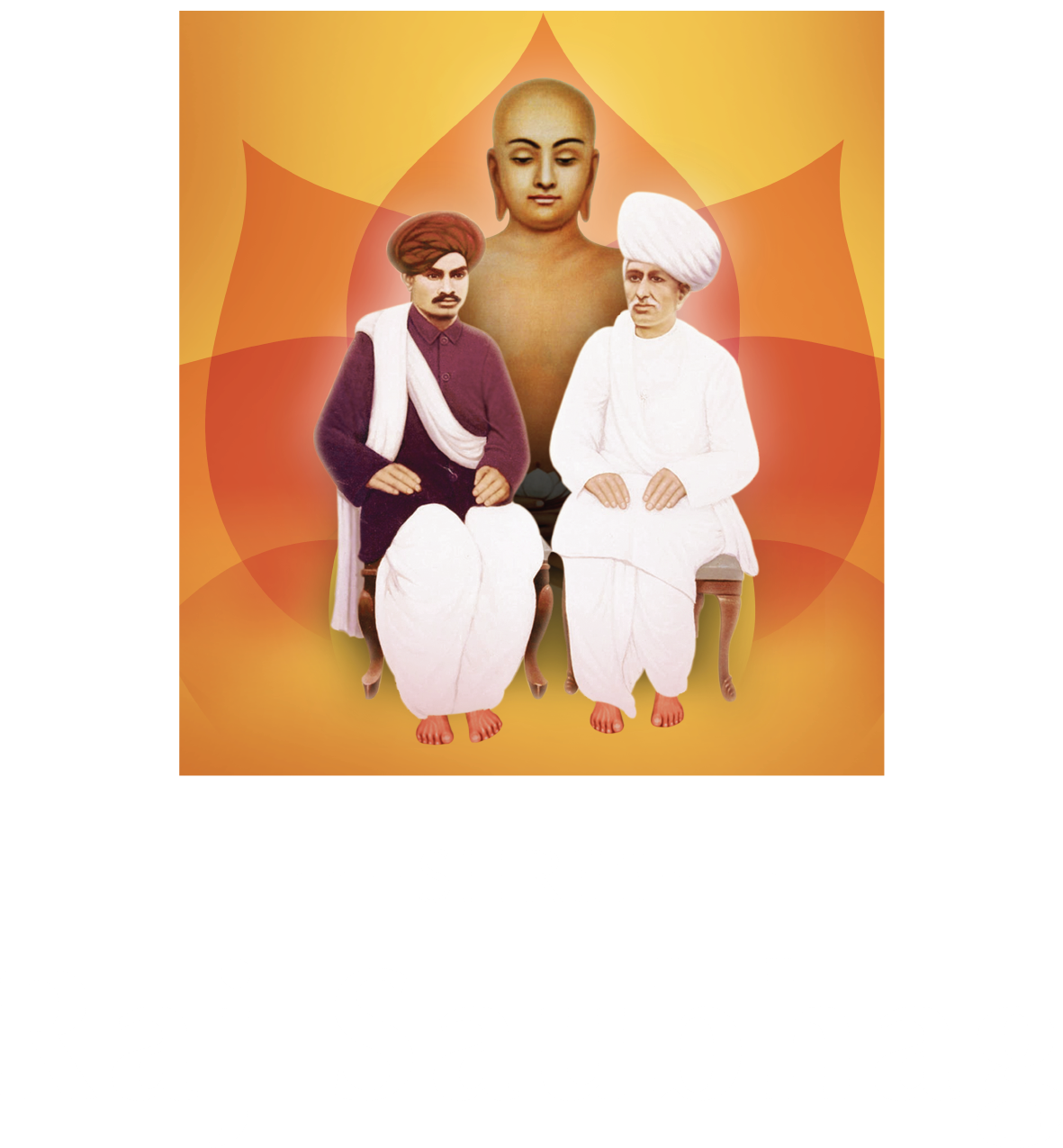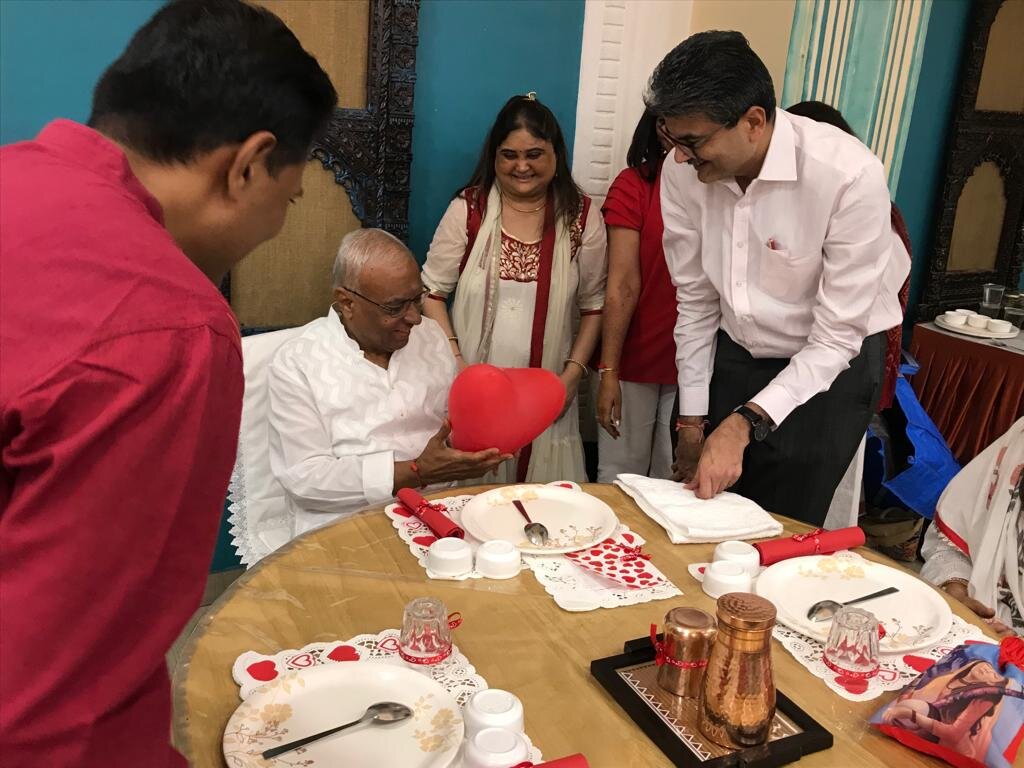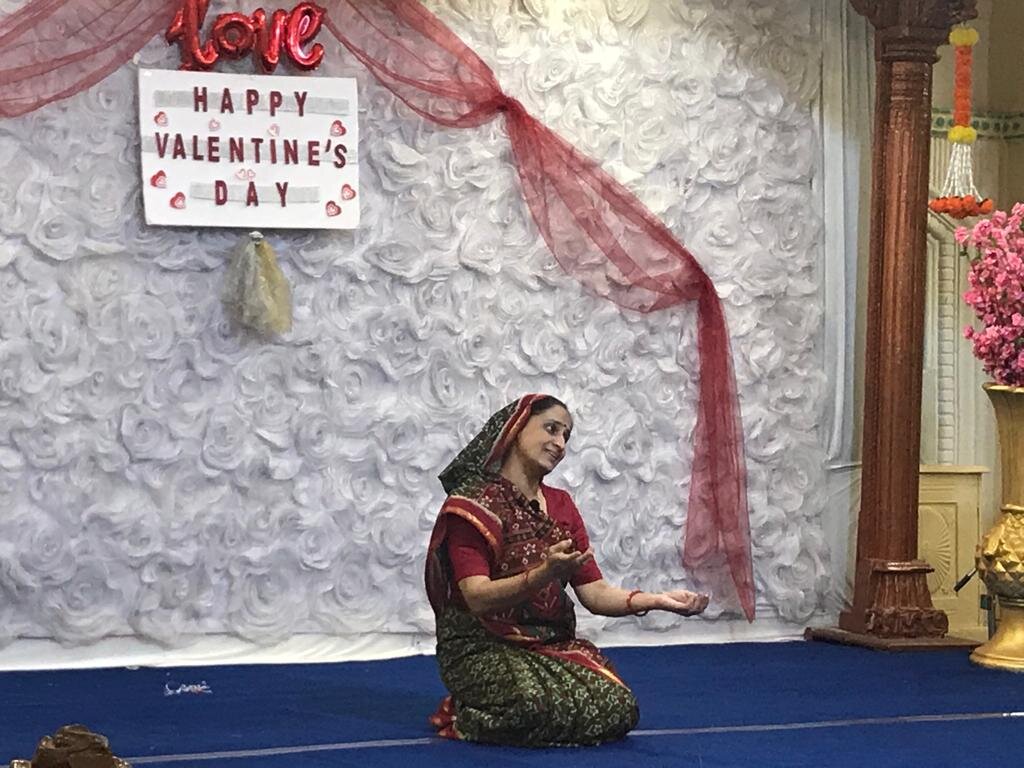“Spiritual love is without limits or boundaries; worldly love is superficial and fluctuating”
Valentine’s day: On this day of love, over a hundred mumukshus (true seekers of liberation) of the Shree Raj Saubhag Ashram gathered at Aajivasan Hall, Santacruz, to celebrate with our beloved Sadguru Param Pujya Bhaishree, a personification of selfless love; an epitome of absolute consciousness. With enthusiasm and love in our beating hearts, the entire atmosphere became celestial when mumukshus received Param Pujya Bhaishree with great reverence. It is the fragrance of his love that moved all the mumukshus to sway their hands in the air as if signifying total submission.
After a sumptuous dinner, our Beloved was welcomed with tilak and garland.
Giving a brief introduction, Param Pujya Bhaishree began his swadhyay by saying that our Valentines are the ones who hold the topmost place in our heart i.e. Bhagwan Mahaveer, Param Krupalu Dev, Param Pujya Bapuji and Param Pujya Guruma. He explained that prem (love) is an innate quality, and as we are all spiritual seekers, we should all endeavour to develop it, enhance it, spread it with whomsoever we are connected with.
“Love is the fuel for spiritual growth.”
Everyone expects that they should be loved, be dealt with in a friendly manner and is helped in times of difficulty. However, what is more important is how we deal with others. Wherever there exists ignorance (agnan), delusion (mohbhaav), false perception of reality (mithyatva); ego and selfishness are bound to be the central focal points there and it is deeply embedded in everyone. If we deal with others kindly and with compassion, then we are bound to get that back in reciprocation.
Param Pujya Bhaishree continued on this point of living with compassion and grace by narrating a conversation between a Guru and his disciple, which takes this concept one stage further.
The Guru asks the disciple as to what is the purpose of our birth on Earth? The disciple replies that we have taken birth to win the love of mankind. The Guru, not very convinced with his answer makes him think hard by posing a further question, is that the only reason or is there anything beyond? With deep introspection, the realisation strikes the disciple and he understands that his thinking was narrow, self-centered and selfish. The Guru then points out that rather than worrying about “if we do good to others, will we get that back in return?” instead, “should we not just feel happy about the fact that we have done our part by doing good to others?”
In continuation of the subject, and to drive home the point, Param Pujya Bhaishree quoted several sayings (from key texts), of which some were explained in detail:
To earn love, it is absolutely necessary to give love.
To live well, love should reflect in our conduct. If that is lacking, then our life is meaningless.
When we deal with our immediate friends, relatives, is it really filled with love, or does ego and pride arise out of small differences, and out of that, emanates anger?
If we have all the knowledge of the world but lack love then such knowledge is of no use.
If we want to live harmoniously, then we have to be conscious, we should create an ability to understand the other person’s feelings and that is the utmost requirement.
Just imagine, a world full of love, with everyone dealing with each other with affection and empathy, then do you believe that an atmosphere of struggle and hatred can even survive?
So powerful were these quotes that its impact is everlasting. O dear Bhaishree, if at all we know what universal love is, it is only and only because of you.
Then Param Pujya Bhaishree, the embodiment of true love that he is, narrated a very effective and engrossing story about a priest who was able to overcome his fear and eventually succeed in softening, influencing and transforming Jerry Mason, a ruthless goon, with the three weapons that he had;
(i) faith (shraddha)
(ii) pure love and
(iii) prayer (prarthana).
It eventually resulted in Jerry, who people were frightened of, becoming their saviour. The story reinstalled our faith in the power of selfless love.
Such a flower of love exists in all our hearts. If we realise and understand the true nature of this love, then we will become eternally happy. Not only that, the impact of such love, maintaining such an aura, will spread in such a way that anyone who comes into contact with us, will eventually realise the power and effect of such selfless love. And if this progress happens, conflict and dispute will become non-existent. We have to understand and imbibe the virtue of such love in our lives and that is our real valentine.
“Every act of selfless love and compassion uplifts the vibration of the entire universe.”
This was followed by 30 minutes of a mono act about a Brahmin boy, Keshav, who later went on to become the Jain Saint, Muni Shri Veervijayji Maharaj Saheb, by accepting the discipleship under Mahamunishwar Shri Shubhvijayji Maharaj. He was the creator of pujas and many other poems which are simple representations of Jainism, karma theory, the nature of the Lord’s bhakti and the glory of pilgrimage. Through his compositions, he became the immortal signature of devotional history of Jin shashan. This act was enacted through the eyes of his maternal aunt, played by a devout shravika Archana Shah .
The evening culminated with devotional and soulful renditions of songs based on Prem Lakshana Bhakti, which is the highest form of devotion, by Shri Johnybhai and his team.
On this day, it is only appropriate to tell our Beloved “Oh Dear Bhaishree, Your soulful simplicity and love embraces us unconditionally, in spite of our shortcomings. Your untiring efforts to elevate our souls to absolute consciousness, makes us bow down to you in veneration and gratitude”.










































